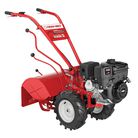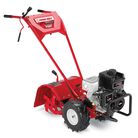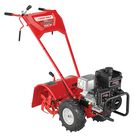Pesky weeds are often the barrier that stands between you and your picture-perfect yard. Sometimes, no matter how much TLC you give your lawn or garden, weed growth can be inevitable and difficult to prevent.
Here are some of the top reasons why weeds may appear in your yard and what you can do to control and prevent weeds from growing back. Luckily, there are steps you can take to help eliminate weeds naturally, without exposing humans, pets and other yard foliage to toxic herbicides, pesticides and fungicides.
- Reduce germination: According to Eric Rochow of GardenFork, a thick, healthy lawn is the best defense against weeds popping up during the warmer months. A thick lawn will help stop sunlight from reaching weed seeds that have overwintered in the soil. He also recommends using a corn gluten-based pre-emergent herbicide in the spring to prevent germination of seeds that have overwintered. During the summer, another tactic is to pull or cut newly growing weeds before they have a chance to flower and drop more seeds, Rochow says.
- Foot traffic: The transfer of weed seeds onto your lawn can make their sprouting inevitable, and the ways they can spread vary. Weed seeds can be transferred onto your lawn by your pets or other animals that walk across your yard. Buds stuck to clothing or shoes can also be transferred onto your grass. Most commonly, weeds like dandelions are blown into your yard by the wind and can germinate once they reach the soil. While total weed transfer is unavoidable, you can help prevent a huge influx of weeds by minimizing lawn foot traffic.
- Soil: Your soil’s condition can be a large factor in weed growth, since weeds thrive in poorly irrigated landscapes. Be sure to use proper watering techniques to keep your soil from becoming soggy or waterlogged. Weeds will also germinate rapidly in undernourished or compacted soil. Using a fertilizer that has a high nitrogen count will not only benefit your growing plants and grass, but will also help deter weeds such as crabgrass.
- Mowing practices: As you prepare to mow your lawn, be aware that cutting your grass shorter than 2 ½ inches can encourage weeds to grow. Be sure you mow your grass often to maintain this taller height without allowing it to get too high. Frequent cutting can also help encourage the grass to outgrow any weeds that may try to germinate. The shade from taller grass keeps the soil cool and prevents weeds from receiving sunlight necessary to grow.
Weeds in the garden: Weeding is the bane of every avid gardener’s existence, especially when cultivating multiple beds of flowers, vegetables and herbs. Many individuals find themselves unable to make time for daily weed removal, which makes keeping up with their rapid growth more challenging. But there are some tactics you can use to control weeds, prevent them from growing back, and make weed control more manageable:
- Smothering established weeds: This method kills established weeds and prevents future growth in areas where you intend to plant. After removing the top growth, apply overlapped layers of cardboard, several dozen newspaper sheets or black plastic, and anchor the material(s) to the ground. Leave this in place for up to a full year to rid the area of weeds.
- By hand: If you prefer to remove weeds by hand, first water the area. Weeds (and their intact root systems) are easier to pull from the ground if the soil is moist.
- Mulch: By completely blocking sunlight from reaching the soil around plants, both organic and inorganic mulches prevent weed seedlings from growing, help keep soil moist and regulate soil temperature. There are different materials that can serve as mulch, depending on preference and available resources, including:
- Grass clippings: Apply clippings in thin layers, allowing each to dry, until the clippings are 3 or 4 inches thick. You can also dry the clippings in the sun before layering them.
- Tree bark: A thick layer (2 to 4 inches) of shredded or ground-up bark or a mixture of wood and bark chips provides attractive, long-lasting weed control and is slow to decompose.
- Gravel, rocks and decorative stones: These materials make excellent permanent mulches for established flower beds. They’re most effective at weed control when installed over landscape fabric or plastic sheeting.
- Rubber mulch: This material, typically made from recycled tires, is effective in suppressing weed growth and can help to retain soil moisture. Some garden centers offer rubber mulch in a variety of colors.
- Black plastic: This is typically used in vegetable gardens because it helps keep the soil warm in the spring, while efficiently preventing weed growth. It’s available in rolls and easy to apply.






